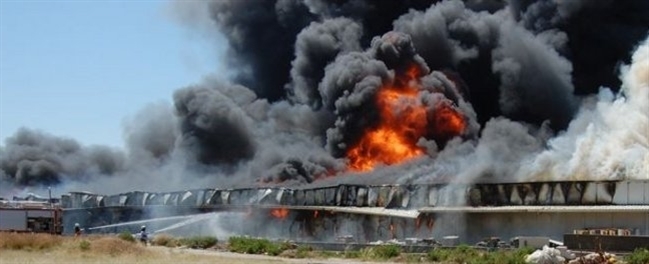
In many industrial facilities, irrespective of the field of activity, the flammable materials used in the roof and facade coatings of the buildings and insulated composite panels unnecessarily increase the fire load and cause fires to affect the whole building and consequently cause great financial losses. When the large-scale fires that have occurred in Turkey within the recent years were examined, it was observed that the use of composite panels insulated with flammable materials have come into prominence in the majority of these fires.
Especially since the early 1980s, the use of new building materials has increased considerably. Among these new materials, especially polyurethane insulated sandwich panels have provided very economical solutions in terms of insulation and hygiene thanks to their reliable temperature control and frequent washability. Such sandwich panels, which have made rapid and significant improvements in many countries, are currently used in a wide range of industrial facility buildings such as the food industry, pharmaceutical factories, laboratories, electrical device manufacturing factories, automotive industry, and cold storage.
However, despite these favorable properties, the unpleasant experiences have revealed that the isolation materials of this nature are extremely vulnerable to fire. Polyurethane and polycyanurate foams, which are classified as thermosets, become fluid when they join the fire and move in the panels by dripping. Polystyrene foam is approximately 1.5 times more flammable than polyurethane and is classified as thermoplastic. This means that when the material is exposed to high heat, it is rapidly softened and shrunk before ignition occurs.
Polyurethane or polystyrene insulated panels with high fire load cause a possible fire to spread quite quickly and are indiscernible within the facility. In addition, as a result of softening, shrinkage and melting of the insulation materials, there is a significant decrease in the panel strengths by causing gaps between sandwich panels. If a fire that started in such buildings is not responded to with an automatic extinguishing system in its early stages, it may become almost impossible to manually intervene and extinguish the fire due to the high temperature and toxic gases that will occur due to the characteristics of the insulation materials such as polyurethane, polystyrene, etc. As a result of the fire, it is inevitable to experience a high rate of material damage and a long process of job loss.
For this reason, it is recommended to use mineral wools such as rock wool, glass wool or approved composite panels that can provide fire resistance instead of composite panels insulated with such flammable materials during the construction stage, especially during the insurance process of a wide range of industrial facility buildings such as in the food industry, pharmaceutical factories, laboratories, automotive industry, and cold storage. Otherwise, a high level of fire precaution may be requested up to the automatic sprinkler system, especially the fire detection system, prior to the acceptance of the fire insurance work.